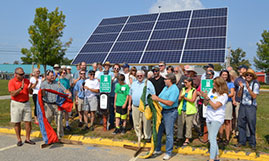Food Security
In 2019-2021, the share of Mainers experiencing food insecurity fell about 2 percentage points.
Favorable movement since the last available data
Benchmark: Maine’s percentage of food insecure households will decline to the U.S. average by 2030.
Overview
Food insecurity has broad negative impacts on health, child development, education outcomes, and productivity. Food-insecure households have disrupted eating patterns, reduced food intake, and reduced quality or variety of diet.
According to the U.S. Department of Agriculture, about 1 in 10 Maine households (9.5%) was food insecure in 2019-2021, down from 11.4% in 2018-2020. This may reflect expanded access to government programs and the hard work of Maine organizations focused on hunger reduction. However, the change is within the margin of error for the estimates, meaning the trend is likely positive but the magnitude may be overstated. Keeping this uncertainty in mind, Maine’s rate of food insecurity appears to be below the national average of 10.4% and above the New England unweighted average of 8.2%.
County-level data are from a different source with a slightly higher estimate of food insecurity (10.5% for Maine in 2021). According to Feeding America, 2021 food insecurity ranged from 8.2% in Cumberland County to over 14% in Piscataquis, Somerset, and Washington counties.
Fig. A
On mobile? Viewing this data is easier at a computer.
Food Insecure Households (Three-Year Average)
U.S. Department of Agriculture, Feeding America
Fig. B
On mobile? Viewing this data is easier at a computer.
Food Insecurity Rate by County 2021
Source: Feeding America







